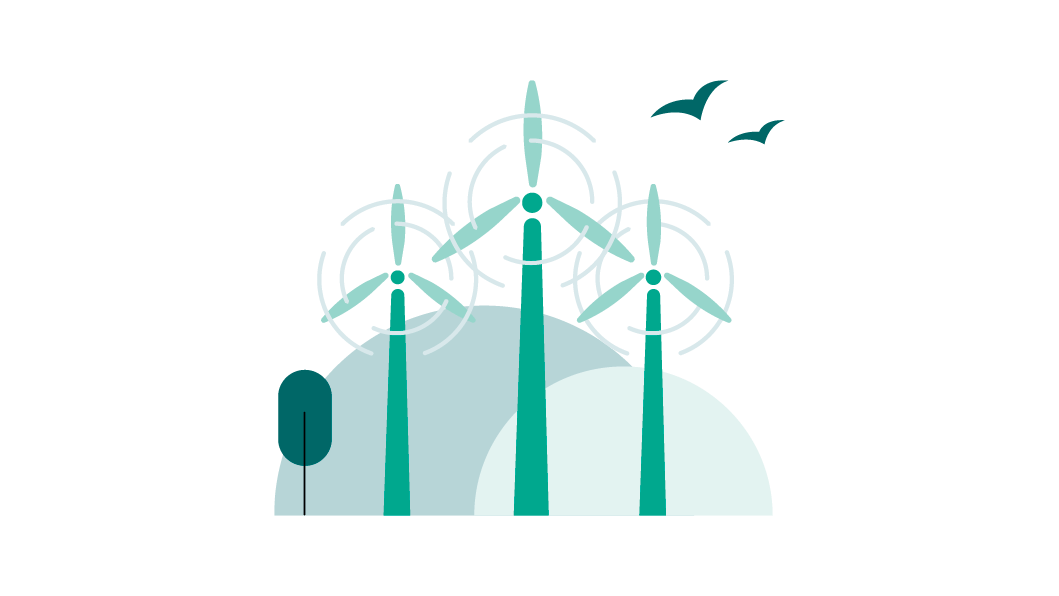How Does Electricity Work?
Explore how we get the electricity that powers our lives.
What Is Electricity? And How Does It Get to My Home?
Electricity is interwoven through most parts of our lives. We use electricity all the time in our homes, businesses, schools, hospitals - and just about everywhere else. It's hard to imagine life without it.
Most of us just turn on a switch and the energy flows. The lights turn on, the kettle boils, your phone starts charging. But do you actually know where the electricity comes from? And how it gets into your home?
Electricity is the energy generated when electrons (the particles in atoms) move and make a current. Electrons have a negative charge and are attracted to things that have a positive charge.
When you plug something in, this flow of electrons goes from the socket, through the wires and into the device. When you unplug it, the flow of electrons stops.

Sources of Electricity
Electricity is a secondary energy source. That means it's made from the conversion of other sources of energy.
This has traditionally meant burning things, such as oil, turf, or gas. Ireland is still reliant on gas to provide a significant portion of our electricity.
But it is planned for renewable energy to become the main way in which we power our homes and businesses by the end of this decade.
Renewable Energy
More and more power is now being generated by renewable energy. By 2020 nearly 40% of our electricity was generated by renewable sources. By 2030 that needs to be 80%.
Renewable energy is energy from a source that doesn't run out. Many renewable sources create virtually no carbon emissions when producing electricity. Wind and solar energy are the two best known examples of this.
To be able to use more renewable energy on the grid Ireland needs more grid infrastructure to be in place - more pylons, more substations, more underground lines.
Without this in place, Ireland's grid won't be able to handle the increased amounts of renewable energy that are expected to be generated later this decade.
Interconnectors
Electricity interconnectors are ways for different electricity grids to exchange power. There are two such interconnectors carrying electricity between Ireland and Britain: the East West Interconnector (EWIC) and the Moyle Interconnector.
EWIC runs from an electricity substation in Co Meath to Wales. Moyle runs from Co Antrim to Scotland. The cables run deep underground and along the seabed to link the two grids.
They allow each grid to purchase electricity from each other when it is needed and when it makes sense for the other grid to sell.
Two new interconnectors are planned: a third interconnector to join Ireland and Britain, and a first interconnector between Ireland and France.
Moving Electricity
Ever wondered what a pylon does? They hold up cables through which Ireland's high voltage electricity is moved around the country. Electricity is moved around the country at high voltage but used in homes and most businesses at a lower voltage. It is more efficient to move electricity around the grid at high voltage - at high voltage less electricity is lost in transit. But electricity then has to be converted to a lower voltage for domestic use.
EirGrid controls movement around the grid from within our National Control Centre, which operates 24 hours a day. The grid is a bit like a motorway for energy, moving high volumes of electricity across large sections of the island; moving it from where electricity is generated to where it needs to be used.
Why can't all projects use underground cables?
Your privacy settings
In order to allow the use of multimedia content on this website you must accept the use of miscellaneous cookies.
Balancing the Grid
Across the grid, electricity is in a constant balance of push-and-pull, as supply and demand interact. Balancing factors such as voltage and frequency is carefully monitored across the entire grid. Safe monitoring and regulation enables power generated at scale by wind farms and power stations to be safely used by domestic appliances in your home.
EirGrid balances the grid minute-by-minute, taking actions where required to ensure a reliable supply of electricity for all users.
What is grid balancing?
Your privacy settings
In order to allow the use of multimedia content on this website you must accept the use of miscellaneous cookies.
Electricity to Your Home
When in a high voltage form, such as moving through the grid, electricity is unable to be used by domestic and most industrial users. It needs to be converted to a lower voltage to be used. Electricity substations, located around the country, do this. Electricity is then at a safe voltage to be supplied to homes and businesses via a more local network. This work is carried out by ESB Networks.
Ireland Needs More Energy
Ireland needs lots of energy. We are using more electricity as our population grows, and we build more homes and workplaces.
Electricity is at the forefront of Ireland's ambitious Climate Action Plan. Decarbonising the way we use electricity is vital to reach our climate goals. EirGrid is leading the transition to a low carbon electricity future by making the grid renewable ready.